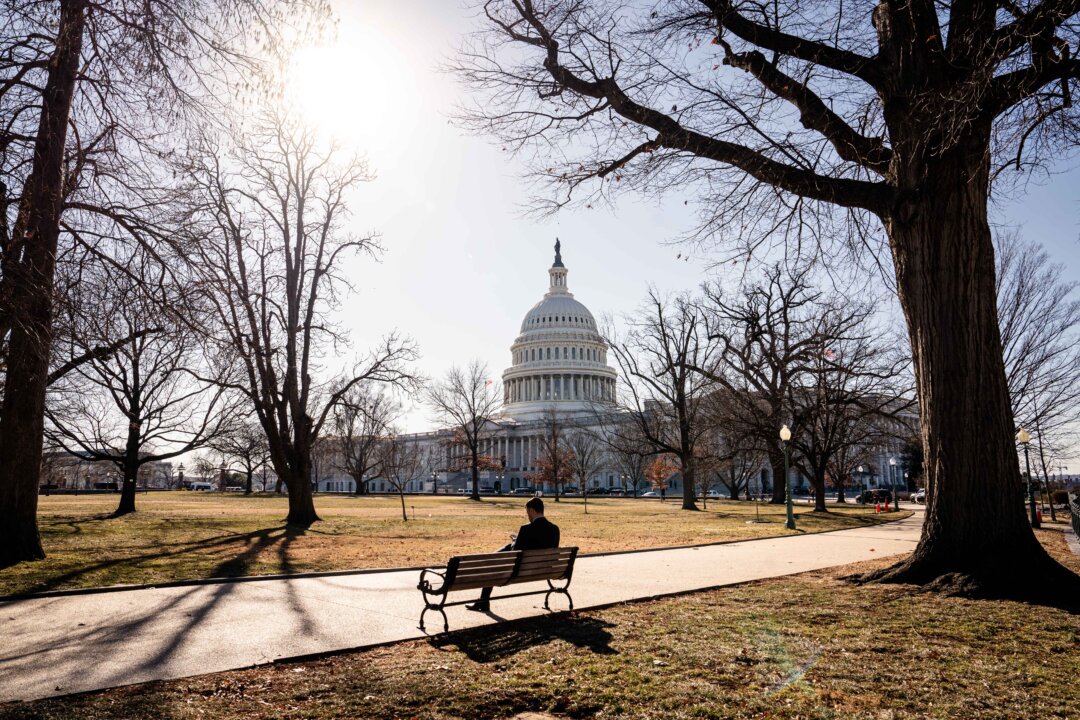The surge in Congress’s approval rating was driven by Republican support as the GOP took full control of both the House and Senate.
Congressional job approval among Americans has surged to its highest level in nearly four years, according to a new Gallup poll, conducted as President Donald Trump continues to take an unprecedented number of executive actions in a wide array of policy areas, including immigration enforcement and downsizing government.
Since early January, Americans’ approval of Congress has climbed 12 percentage points, reaching 29 percent—the highest rating recorded since May 2021, according to a recent Gallup survey published on Feb. 19. For more than two years prior, congressional approval had remained below 20 percent.
The poll was conducted between Feb. 3 and 16, roughly a month after the 119th Congress convened on Jan. 3, with Republicans gaining full control of both the House and Senate for the first time since 2019.
The increase in Congress’s approval rating is largely attributed to a dramatic 42-point surge among Republicans, who now register a 53 percent approval of Congress. This shift likely reflects enthusiasm following the election of more Trump-aligned Republicans to both chambers. Independents also registered an increase in approval, rising by nine points to 26 percent. By contrast, approval among Democratic fell by 18 points to just 5 percent.
Historically, the last time Republican approval of Congress exceeded its current level was in August 2005, when GOP control of both chambers pushed their approval to 57 percent. More recently, when Republicans controlled Congress and the White House between 2017 and 2019, their highest recorded approval was 50 percent in February 2017. Over the entire period, Republican approval of Congress averaged 29 percent.
Similarly, when Democrats controlled both chambers and the presidency between 2021 and 2023, their approval of Congress peaked at 61 percent in 2021, averaging 40 percent across that period. A comparable pattern was observed from 2009 to 2011, when Democratic control saw congressional approval among their party reach 63 percent in May 2009, with an overall average of 40 percent.
The highest-ever congressional approval ratings for both parties came in 2001, following the Sept. 11 terrorist attacks, when Americans rallied around national institutions. In October 2001, approval ratings stood at 89 percent among Republicans, 82 percent among Democrats, and 81 percent among independents.
The poll was released as Senate Republicans prepared to advance a legislative package focused on Trump’s agenda, including forwarding his immigration, energy production, and defense policies.
Senate Majority Leader John Thune (R-S.D.) announced on Feb. 19 that Republicans will push forward with their slimmer proposal, despite Trump’s public endorsement of a more sweeping House-backed plan that includes trillions in tax cuts. remove
Trump has urged lawmakers to unify behind the House plan, which consolidates major policy initiatives into a single bill. House Republicans, concerned that the Senate’s more limited approach might jeopardize their ability to extend Trump-era tax cuts, remain steadfast in their preference for their own budget bill. The House GOP holds a narrow 218-215 majority, adding pressure to their legislative strategy.
Following a lunch meeting with Vice President JD Vance and Senate Republicans, Thune signaled that the Senate would proceed with its own version of the legislation. “In the end, we’ll be able, whether it’s one bill or two bills, to get all the things that the president’s outlined—his objectives—across the finish line,” Thune said, adding that a Senate vote is expected on Thursday.
Democrats, meanwhile, have vowed a battle against the budget proposal.
The Senate proposal outlines a $340 billion budget resolution for fiscal year 2025, increasing annual spending by $85 billion over four years to fund border security measures, Trump’s deportation initiatives, energy deregulation, and expanded military spending. Republicans argue that these expenditures will be offset by cuts in other areas.
The House budget resolution includes these same priorities but also incorporates $4.5 trillion in tax cuts, offset in part by $2 trillion in spending reductions and projected economic growth tied to tax and energy policy reforms.
To advance Trump’s legislative agenda, both chambers must pass the same budget resolution in order to unlock a process that allows Republicans to bypass Democratic opposition and the Senate filibuster.

